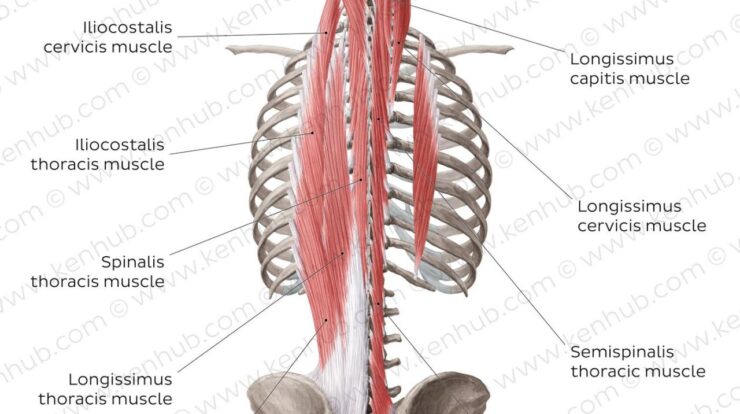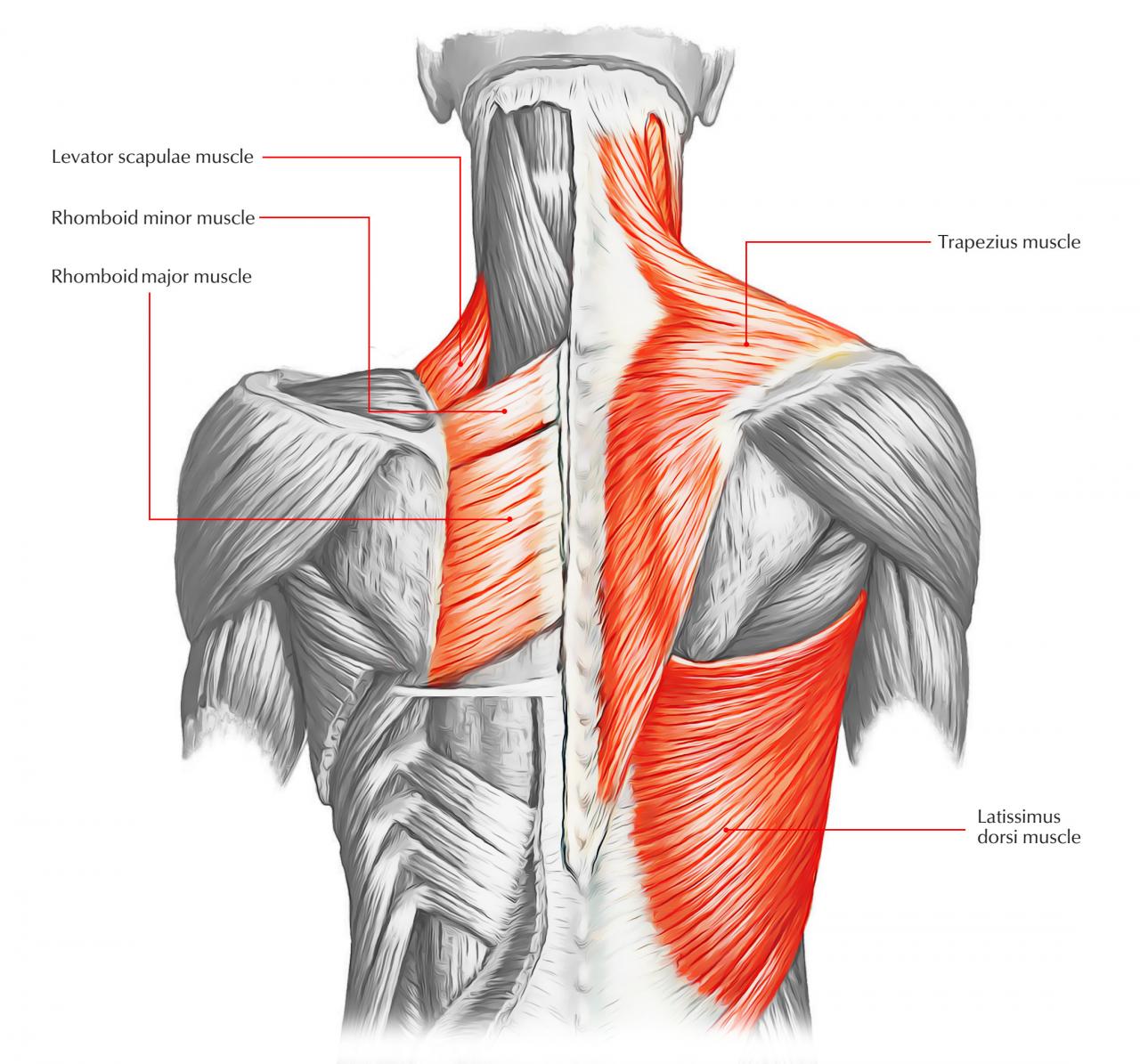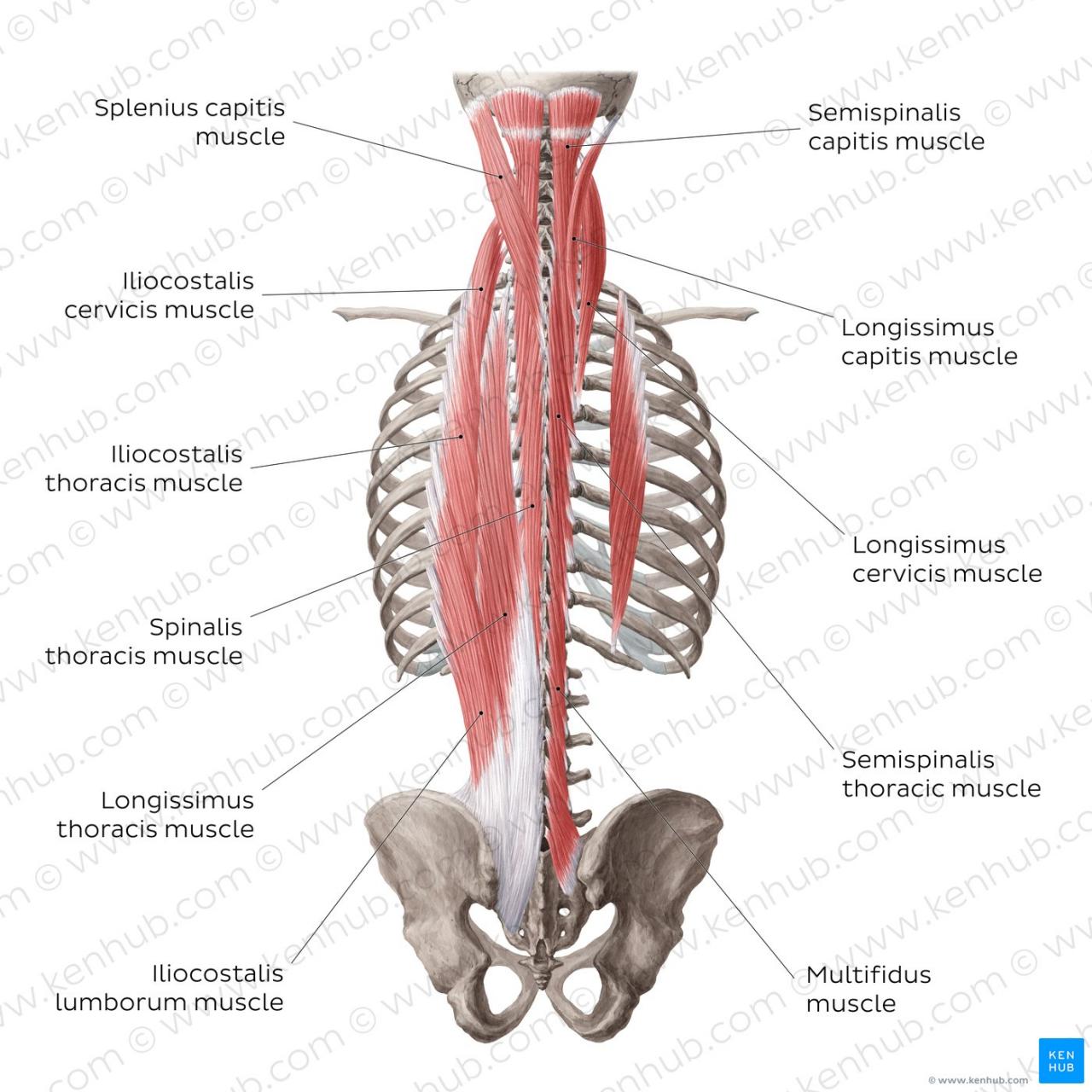
Back muscles, the unsung heroes of our musculoskeletal system, play a crucial role in our posture, movement, and overall well-being. From the intricate network of muscles that support our spine to the powerful muscles that allow us to lift, bend, and twist, back muscles are essential for our daily functioning.
In this comprehensive guide, we delve into the anatomy of back muscles, explore effective exercises to strengthen and condition them, identify common injuries associated with these muscles, and discuss the importance of rehabilitation for optimal recovery.
Back Muscles
The back muscles, also known as the posterior chain, play a crucial role in posture, movement, and overall physical well-being. Understanding their anatomy, functions, and proper training techniques is essential for maintaining a healthy and balanced musculoskeletal system.
Stiff and tight muscles can contribute to back pain, a common issue that affects many individuals. To alleviate back discomfort, it’s crucial to engage in regular exercise that targets the back muscles . Fortunately, there are effective lower back exercises at home that can be easily incorporated into one’s routine.
Anatomy of Back Muscles
The back muscles can be divided into three main groups:
- Superficial Muscles:These muscles lie closest to the skin and are responsible for the overall shape and movement of the back.
- Intermediate Muscles:Located beneath the superficial muscles, they assist in spine stabilization and rotation.
- Deep Muscles:The deepest layer of back muscles, they provide support and stability to the spine.
The following table lists the major muscle groups of the back, along with their locations and functions:
| Muscle | Location | Function |
|---|---|---|
| Trapezius | Upper back and neck | Shoulder elevation and retraction |
| Latissimus dorsi | Middle and lower back | Arm extension and adduction |
| Rhomboids | Upper back between shoulder blades | Shoulder retraction and stabilization |
| Erector spinae | Along the spine | Spine extension and stabilization |
| Quadratus lumborum | Lower back | Spine stabilization and lateral flexion |
Exercises for Back Muscles

To effectively strengthen and condition the back muscles, various exercises can be incorporated into a workout routine. These exercises target different muscle groups and can be tailored to individual fitness levels and goals.
Some of the most common and effective back exercises include:
- Barbell Row:Targets the latissimus dorsi, rhomboids, and biceps.
- Pull-up:Works the latissimus dorsi, biceps, and forearms.
- Dumbbell Flye:Isolates the latissimus dorsi and improves shoulder mobility.
- Deadlift:A compound exercise that engages the erector spinae, hamstrings, and glutes.
- Back Extension:Strengthens the erector spinae and improves posture.
Common Back Muscle Injuries
Due to their complex structure and frequent use, back muscles are susceptible to various injuries. Some of the most common include:
- Muscle Strain:A tear or overstretching of the muscle fibers.
- Herniated Disc:When the soft, jelly-like center of an intervertebral disc pushes through its tough outer layer.
- Sciatica:Pain that radiates down the leg caused by compression of the sciatic nerve.
- Spondylosis:Degeneration of the spine, leading to pain and stiffness.
These injuries can have varying causes, such as poor posture, heavy lifting, or sudden movements. Symptoms may include pain, stiffness, weakness, and numbness.
On a heartwarming note, this Mother’s Day, let’s express our gratitude to the special women in our lives. To our sisters, we wish you a happy Mother’s Day . And to our mothers, we send heartfelt happy Mother’s Day wishes .
Conclusive Thoughts

Understanding the anatomy, exercises, injuries, and rehabilitation of back muscles empowers us to maintain a healthy and pain-free back. By incorporating targeted exercises into our fitness routines, addressing injuries promptly, and following a structured rehabilitation plan, we can optimize the function of our back muscles and enjoy a life of mobility and comfort.
Quick FAQs: Back Muscles
What are the major muscle groups of the back?
The major muscle groups of the back include the trapezius, latissimus dorsi, rhomboids, erector spinae, and quadratus lumborum.
What are some common exercises to strengthen back muscles?
Effective exercises for strengthening back muscles include pull-ups, rows, deadlifts, and back extensions.
What are the symptoms of a back muscle injury?
Symptoms of a back muscle injury may include pain, stiffness, muscle spasms, and difficulty moving the back.